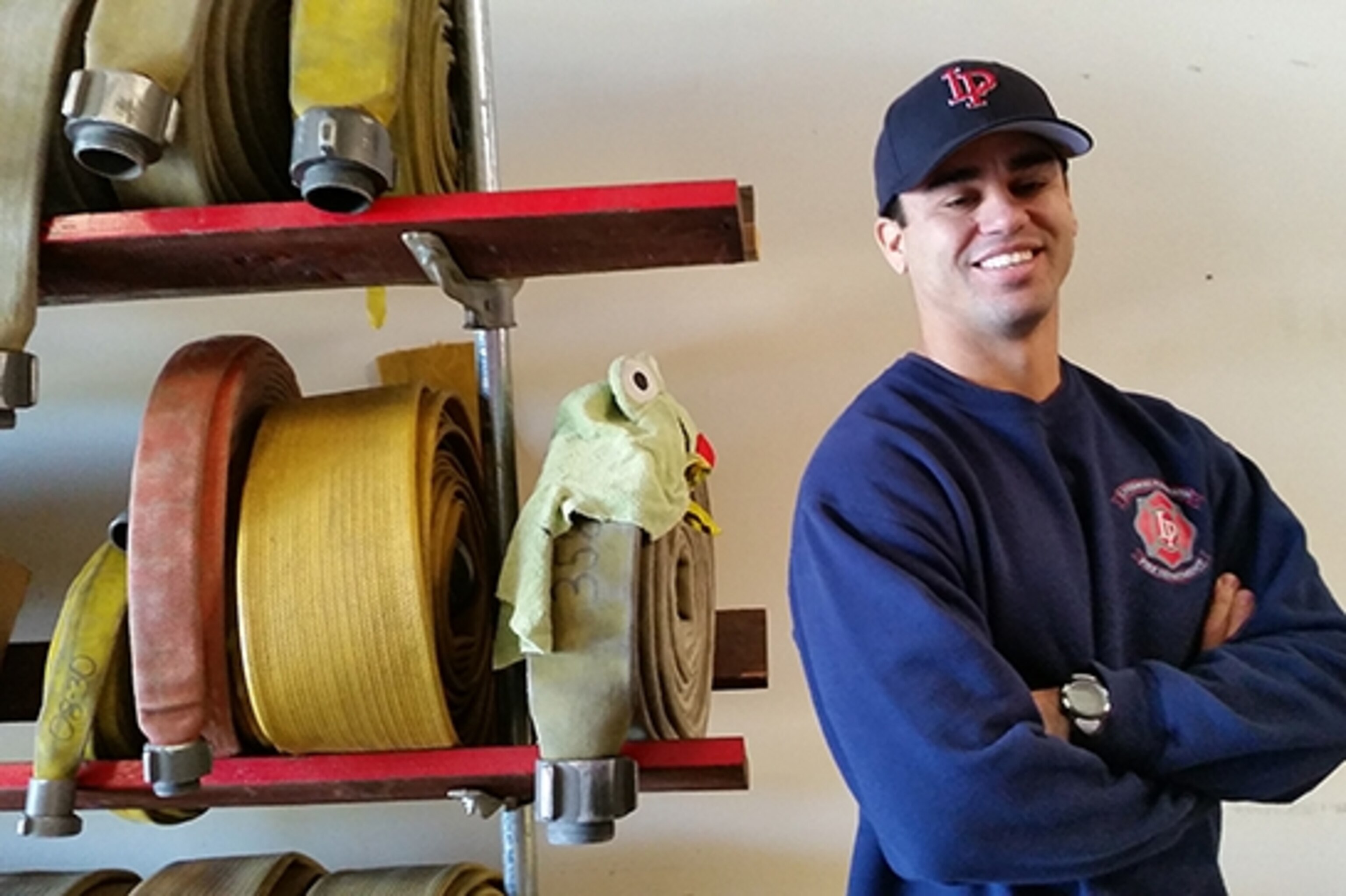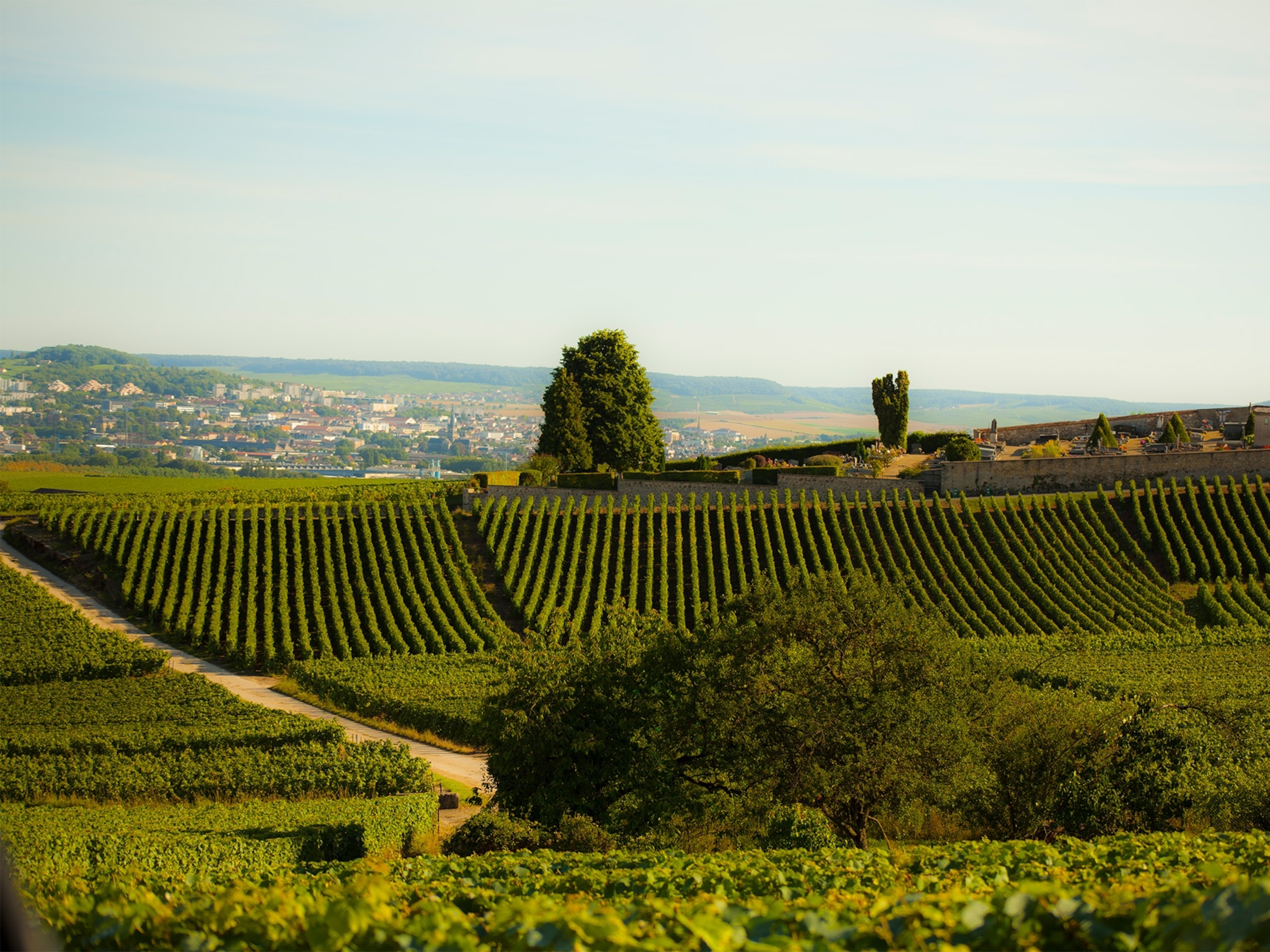
California’s Longest-Running Light
It’s got the wine, the hills, the history—and the world’s biggest laser, too. It even has an element named for it (livermorium). What Livermore, California, doesn’t have going for it, perhaps, is its name.
Just the mere mention of other wine stars of the Golden State—Napa, Sonoma, Paso Robles—linger on your tongue like a chocolaty, oak-barrel finish. “Livermore” sounds like an unfortunate order in a cafeteria lunch line.
The reality, found by the few who take the green exit signs off nearby I-580’s ten lanes, comes quick.
“Livermore is where Napa was 20 to 30 years ago,” says Steve Ziganti at 3 Steves, one of 60 wineries found around Livermore, an hour’s ride southeast of San Francisco. Meaning it’s quieter, cheaper, more laid-back. “And you can actually talk with the winemaker,” says the winemaker.

The broad Tri-Valley, as the area is known, is rimmed with bald peaks you can climb, and sloping hillsides home to horse ranches and many rows of vines. California’s longest-running family-run winery, Wente, has two locations here. But scanning the winery list for a starting point, I quickly zero in on 3 Steves. It’s tasty, and their 2011 zinfandel won an award at this year’s San Francisco Chronicle Wine Festival.
Plus, there are a few Steves here.
I get a bottle of Cabernet Sauvignon, then head into downtown Livermore, which is alive on a Sunday night. A cavernous alehouse is packed with families eating burgers. I see Greek, Thai, French, and Afghan restaurants, on the same block as 50-year-old ice creameries and Baughman’s, a huge Western wear shop that’s been around since the late 1800s. Inside I peek at row at rows of Panhandle Slim, Pendleton, and Wrangler shirts (and a $1,300 Stetson) then thumb through those cute name “Sheriff” badges I’ve not seen since the early ‘80s.
Down the block, I stop outside the city’s former jail and courthouse. Now home to a salon and an “ultra lounge,” the 19th-century building features a mural of an earlier tenant: the fire department. It shows firefighters parading with horse-drawn wagons and dramatic WWI-era moustaches. And a giant lightbulb dangling from the open doorway. This bulb is a Livermore icon. It’s been turned on nonstop, more or less, since 1905.
The next morning, I start my day tracking down the still buzzing bulb at its new location: the 1970s-era Fire Station No. 6 at Livermore Community Park, where it arrived plugged into a mobile generator in 1977. I ring a bell and Gilbert the fireman appears. “Here for the lightbulb?”
A Livermore native, Gilbert takes me through the wide garage to a wall lined with hoses, one decorated like Kermit the frog. (“This is the sort of thing that happens when you put four guys in a house,” Gilbert explains.) Above you can see the gold bulb dangling from the ceiling on a cord, its thick filaments zig-zagging in the shape of a three-fingered hand. You can see it whenever they have time for you, or via its “live” BulbCam.

(Incidentally, it’s a rule here that firefighters who get their photographs in the paper have to buy the rest ice cream. Does National Geographic Traveler count too, Gilbert?)
A few blocks east of the bulb is something bigger, the world’s largest laser at the Department of Energy’s Lawrence Livermore Research Lab, set up in the ‘50s to research nuclear weapons and plutonium (among other things). I didn’t know the three-hour Tuesday tours require a two-week clearance first, so I drop by its small museum at the Discovery Center instead.
I breeze through a circular exhibit of turned-off TVs and a stream of signs, and ask the 58-year-old woman running the front desk about livermorium. This recent addition is No. 116 on the period table of elements—and something the center helped discover.
“Well, discover isn’t the right word actually,” she corrects me good-naturedly. “It was created.” The lab collaborated with a Russian lab to make it. I wonder what its purpose is. What does it do?
“Absolutely nothing. It only lives a millisecond.”
She shows me around a bit, and notes the inner dome capsule, coated in bolt-like projections and shining panels that make it look like a bloated Tusken Raider head made of steel. (It’s a model of the center’s NIF Target Chamber, which houses the laser, and actually did appear in a recent Star Trek film.)
“You want to know what’s scary though?” she volunteers suddenly. “My dad worked here during the Cold War. One thing you don’t want to do is tell a fourth grader that you’re living in a ‘third strike’ town.” Livermore was targeted third by the Soviets, apparently.
The surreal neighbors of this enormous, hush-hush government facility are plots of vineyards and horse ranches. But I’m most fascinated by the road to the south, Tesla Road. I ask a few locals about the origin of the name. One, unhelpfully, guesses, “It’s not named for the car, but the scientist. Russian, I think he was.” (Nikola Tesla was a Serbian, born in modern-day Croatia.)
I drive back toward the center and ask about the library. A few books on Livermore are produced, and I learn Tesla was a coal mining town over a century ago, named in the 1890s by a Tesla fan who had hoped to send coal energy to San Francisco. It failed. In Historic Livermore, California (2007), I read that the town of 500 disappeared shortly after the mines closed in 1907.

I drive out anyway. East of town, rows of recently harvested grapes gradually give way to more and more horse ranches rimmed by white fence posts. Atop the crest of one bald hilltop, a brown horse stands. At first I mistake it for a model. I stop to photograph him and he neighs territorially. Beyond, the road rises and rolls more dramatically, passing deep chasms on brown hills with a scattering of windswept trees holding ground. I pull off onto a gravel shoulder and get out to peek at the valley floor. It’s hard to believe just beyond the hills to the south is the steady roar of I-580 traffic.
After 12 miles, I see dirt bike riders in fell getup, and I pull into the Carnegie State Vehicular Recreational Area, home to 1,300 acres of hills crisscrossed by motorbike trails that lead up steep, narrow pathways and disappear into tight valleys cars can’t reach.
“Do you ride?”
For a second I assume Taylor, a cheerful park ranger in his 20s with short spiked blonde hair, is joking. (I’m wearing a brown Polo sweater and a tweed flat cap. And have no motorcycle handy.) I say no and bring up Tesla. And he perks up.
“We have a lot of history here. But no one seems to be interested in it,” he says, pointing out chunks of century-old Carnegie bricks they used to create a walkway. “It gets lonely out here during the week.”
A couple of motorbikes pass by noisily, so Taylor leads me into the park office, where there are a few display cases of critters you find around here. Below the bobcat, and above a yellow-billed magpie and a rattler, is a scorpion sitting atop a glass case. “I found this fella outside yesterday,” he says flicking its carcass with his finger.
Tesla the mine and the town site have no public access, he tells me. The only way you can see it—marked by the tailing piles from the old mines—is from way above, via the dirt-bike trails. I look up, and wonder, for the very first time, what I might look like in a motorcycle jumpsuit of neon green. I mean, I don’t even do Spandex.
Maybe next time.
HOW TO DO THIS TRIP
Book your room. Unfortunately Livermore lacks much memorable lodging. So book ahead, because you’ll want to be in one of the ten rooms at Purple Orchid, set amid horse ranches and vines, several miles east of town. It’s the only option beyond the chain hotels by the freeway. As backup, try the Rose Hotel in nearby Pleasanton, run by NFL veteran John Madden’s family.
Sip the wine. Most of Livermore’s wineries are open for tastings only Friday to Sunday. But there are a handful, including Wente and Concannon, that are open all week. Tastings are usually about $10, with the fee knocked off if you buy a bottle or two. Clearly marked bike lanes run along two-lane roads between tasting rooms. (Purple Orchid rents bikes.)
Hike. You can get great vantage points from trails in the Del Valle Recreation Area, with a reservoir that sees some local boating, or—north of I-580—Bushy Peak, reached by a one-lane road. Its 4.4-mile loop goes up to twin peaks, with looks back across Tri-Valley and the turbines of Altamont, just east, where the Rolling Stones played their infamous “Gimme Shelter” concert in 1969. For information on other area hikes, see the Tri-Valley website.
Buy ice cream for firefighters. If you ever need to buy ice cream for a fire station crew, Loard’s downtown has been around since 1950.
You May Also Like
Go Further
Animals
- How can we protect grizzlies from their biggest threat—trains?How can we protect grizzlies from their biggest threat—trains?
- This ‘saber-toothed’ salmon wasn’t quite what we thoughtThis ‘saber-toothed’ salmon wasn’t quite what we thought
- Why this rhino-zebra friendship makes perfect senseWhy this rhino-zebra friendship makes perfect sense
- When did bioluminescence evolve? It’s older than we thought.When did bioluminescence evolve? It’s older than we thought.
- Soy, skim … spider. Are any of these technically milk?Soy, skim … spider. Are any of these technically milk?
Environment
- Are the Great Lakes the key to solving America’s emissions conundrum?Are the Great Lakes the key to solving America’s emissions conundrum?
- The world’s historic sites face climate change. Can Petra lead the way?The world’s historic sites face climate change. Can Petra lead the way?
- This pristine piece of the Amazon shows nature’s resilienceThis pristine piece of the Amazon shows nature’s resilience
- Listen to 30 years of climate change transformed into haunting musicListen to 30 years of climate change transformed into haunting music
History & Culture
- Meet the original members of the tortured poets departmentMeet the original members of the tortured poets department
- Séances at the White House? Why these first ladies turned to the occultSéances at the White House? Why these first ladies turned to the occult
- Gambling is everywhere now. When is that a problem?Gambling is everywhere now. When is that a problem?
- Beauty is pain—at least it was in 17th-century SpainBeauty is pain—at least it was in 17th-century Spain
Science
- Here's how astronomers found one of the rarest phenomenons in spaceHere's how astronomers found one of the rarest phenomenons in space
- Not an extrovert or introvert? There’s a word for that.Not an extrovert or introvert? There’s a word for that.
- NASA has a plan to clean up space junk—but is going green enough?NASA has a plan to clean up space junk—but is going green enough?
- Soy, skim … spider. Are any of these technically milk?Soy, skim … spider. Are any of these technically milk?
Travel
- This tomb diver was among the first to swim beneath a pyraamidThis tomb diver was among the first to swim beneath a pyraamid
- Dina Macki on Omani cuisine and Zanzibari flavoursDina Macki on Omani cuisine and Zanzibari flavours
- How to see Mexico's Baja California beyond the beachesHow to see Mexico's Baja California beyond the beaches
- Could Mexico's Chepe Express be the ultimate slow rail adventure?Could Mexico's Chepe Express be the ultimate slow rail adventure?






